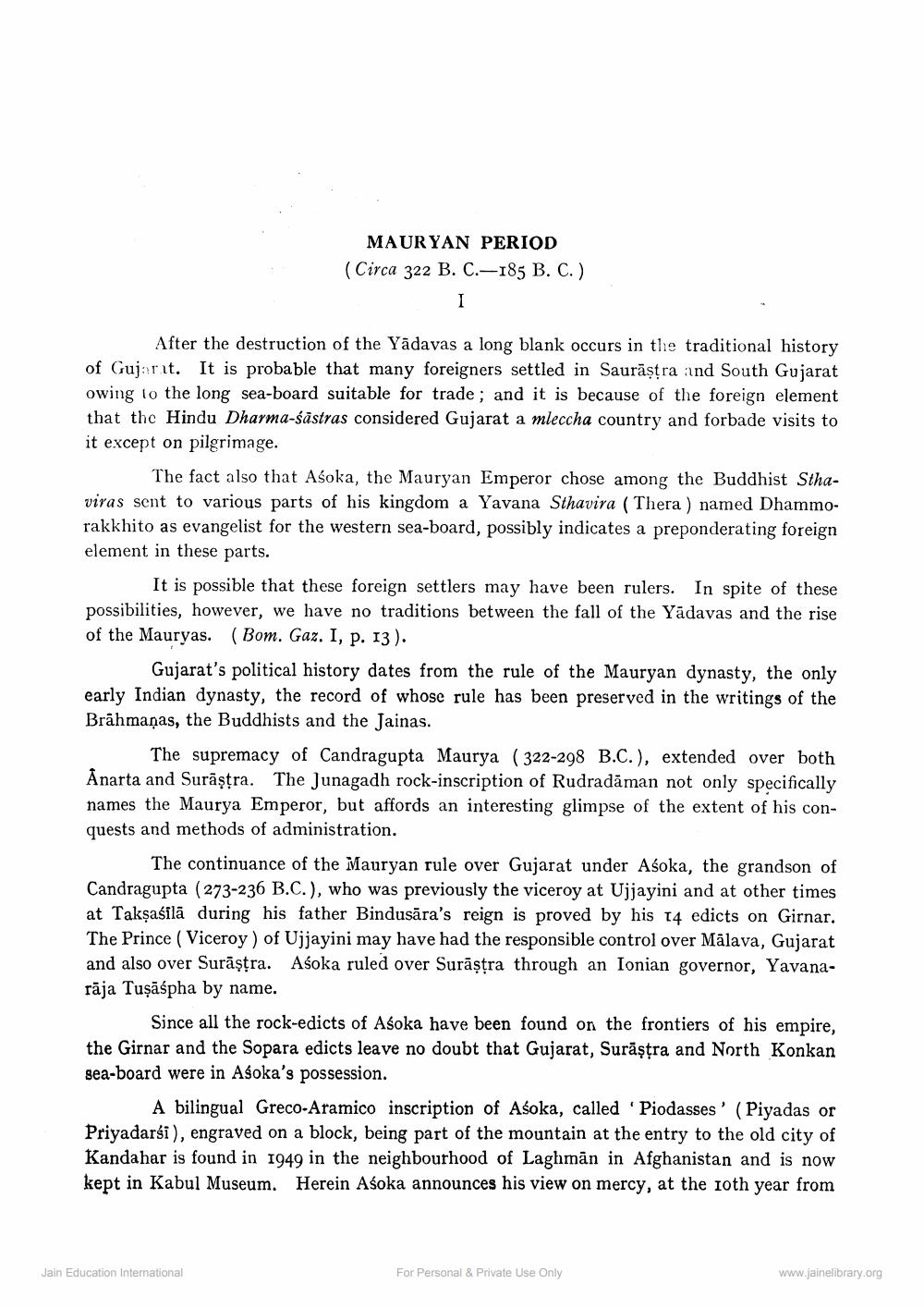________________
MAURYAN PERIOD (Circa 322 B. C.-185 B. C. )
After the destruction of the Yādavas a long blank occurs in the traditional history of Gujarat. It is probable that many foreigners settled in Saurāṣtra and South Gujarat owing to the long sea-board suitable for trade; and it is because of the foreign element that the Hindu Dharma-śāstras considered Gujarat a mleccha country and forbade visits to it except on pilgrimage.
The fact also that Asoka, the Mauryan Emperor chose among the Buddhist Sthaviras sent to various parts of his kingdom a Yavana Sthavira (Thera ) named Dhammorakkhito as evangelist for the western sea-board, possibly indicates a preponderating foreign element in these parts.
It is possible that these foreign settlers may have been rulers. In spite of these possibilities, however, we have no traditions between the fall of the Yādavas and the rise of the Mauryas. (Bom. Gaz. I, p. 13).
Gujarat's political history dates from the rule of the Mauryan dynasty, the only early Indian dynasty, the record of whose rule has been preserved in the writings of the Brāhmaṇas, the Buddhists and the Jainas.
The supremacy of Candragupta Maurya (322-298 B.C.), extended over both Anarta and Surāşțra. The Junagadh rock-inscription of Rudradāman not only specifically names the Maurya Emperor, but affords an interesting glimpse of the extent of his conquests and methods of administration.
The continuance of the Mauryan rule over Gujarat under Asoka, the grandson of Candragupta (273-236 B.C.), who was previously the viceroy at Ujjayini and at other times at Takşašilā during his father Bindusāra's reign is proved by his 14 edicts on Girnar. The Prince (Viceroy ) of Ujjayini may have had the responsible control over Mālava, Gujarat and also over Surāştra. Asoka ruled over Surāştra through an Ionian governor, Yavanarāja Tuşāśpha by name.
Since all the rock-edicts of Asoka have been found on the frontiers of his empire, the Girnar and the Sopara edicts leave no doubt that Gujarat, Surāştra and North Konkan sea-board were in Asoka's possession.
A bilingual Greco-Aramico inscription of Asoka, called 'Piodasses' (Piyadas or Priyadarsi), engraved on a block, being part of the mountain at the entry to the old city of Kandahar is found in 1949 in the neighbourhood of Laghmān in Afghanistan and is now kept in Kabul Museum. Herein Asoka announces his view on mercy, at the roth year from
Jain Education Intemational
For Personal & Private Use Only
www.jainelibrary.org




